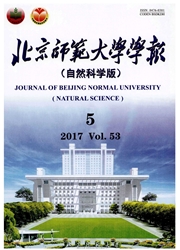

 中文摘要:
中文摘要:
适应性景观这一概念激发了进化生物学领域内的许多研究,它的性质对预测种群进化过程具有重要意义.理论研究预测了多种景观的形态,但能被实验数据支持的还很少,因为实验构建适应性景观非常困难.一些微生物实验进化研究通过分析种群进化的可重复性,间接推测了景观的崎岖性,但不能给出其拓扑结构的具体信息.本研究尝试将适合度数据映射到表型空间的办法来直接呈现适应性景观的形态.共使用9个不同基因型的大肠杆菌株系作为祖先,对每个基因型建立6个重复家系,在一个限定养分的环境中对这54个种群进行了约1 100代的选择实验.在考察后代种群对选择环境响应(菌株的氮、磷质量分数w及适合度变化)的同时,利用进化断点处的实测数据信息,通过局域多项式回归拟合的方法,构建了基于细菌元素表型的适应性景观.研究发现,不同菌株家系对相同的选择环境表现出不同的响应模式;大部分后代种群相比其祖先提高了适应性;适应性景观呈现崎岖多峰的形态.
 英文摘要:
英文摘要:
The concept of adaptive landscape(AL)has inspired so many different researches in evolutionary biology,because its nature is thought to be essential in predicting evolutionary processes for populations under selection.Theoretical studies have predicted various topography of AL,but few empirical data could form compelling evidence due to huge difficulty in experimentation.Several studies employing experimental evolution of microbes made it possible to infer whether AL is smooth or rugged,by analyzing repeatability of evolution in replicate populations.But this common approach is less useful for actual AL topology.In this study,we tried a more direct way to infer the shape of AL,through plotting fitness onto a phenotype space defined by element contents of derived bacteria.Nine founding genotypes of Escherichia coli strains,each replicated six times, were batch cultured in a chemically defined environment for 1100 generations.We assessed evolutionary changes of derived populations in nitrogen and phosphorous contents,as well as adaptation indicated by their competitive fitness.Furthermore,we used these data to construct a simple Adaptive Landscape through local polynomial multiple regression.Our results show that patterns of responses to selection varied among different strain lines,and most derived populations increased their fitness compared with ancestors.Visualization presents a rugged AL under our selection regime.
 同期刊论文项目
同期刊论文项目
 同项目期刊论文
同项目期刊论文
 Phages limit the evolution of bacterial antibiotic resistance in experimental microcosms. Evolutiona
Phages limit the evolution of bacterial antibiotic resistance in experimental microcosms. Evolutiona Exposure to phages has little impact on the evolution of bacterial antibiotic resistance on drug con
Exposure to phages has little impact on the evolution of bacterial antibiotic resistance on drug con No Evolutionary Shift in the Mating System of North American Ambrosia artemisiifolia (Asteraceae) Fo
No Evolutionary Shift in the Mating System of North American Ambrosia artemisiifolia (Asteraceae) Fo 期刊信息
期刊信息
